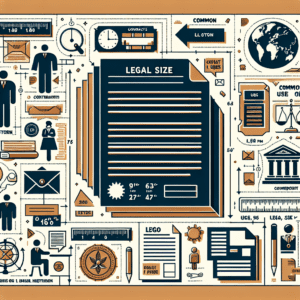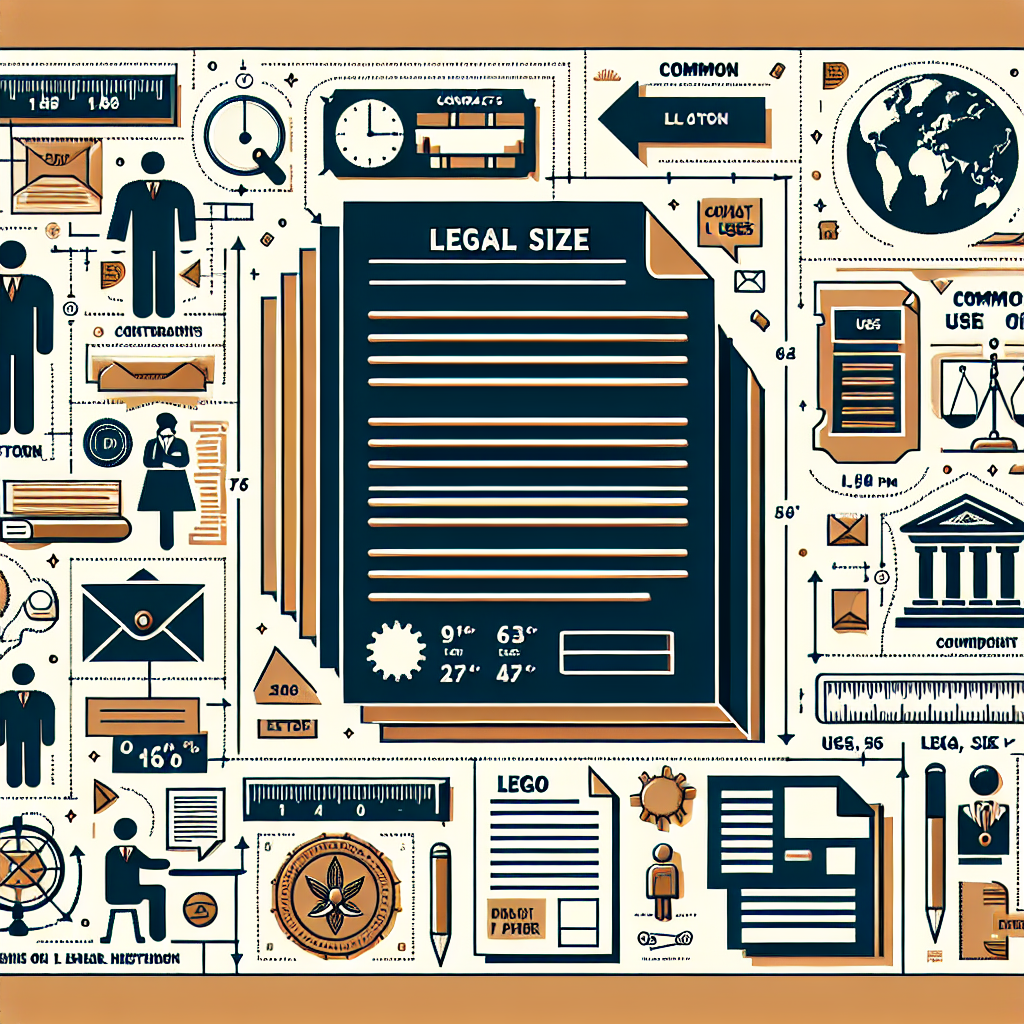===INTRO:===
Understanding legal paper size is crucial for anyone involved in legal and business fields, as the dimensions can significantly affect document management and presentation. Have you ever found yourself grappling with the nuances of paper sizes? Perhaps you’ve faced frustration when your meticulously formatted document didn’t fit into the correct file or binder. This oversight can lead to disorganization, inefficiencies, and even missed deadlines. By grasping the dimensions of legal paper and its appropriate uses, you can streamline your workflow, ensuring that your documents not only look professional but also maintain their integrity throughout the legal process.
The Importance of Legal Paper Size: Dimensions That Matter
Legal paper, measuring 8.5 inches by 14 inches, plays a pivotal role in various professional settings, particularly in law offices. Understanding the significance of its size is essential for anyone working with legal documents. Unlike standard letter-sized paper (8.5 inches by 11 inches), legal paper provides additional space, allowing for more extensive text, signatures, and annotations. This extra length is vital for legal documents such as contracts, pleadings, and affidavits, where details matter immensely. Using the appropriate paper size can help ensure that vital information isn’t lost or obscured, making it easier to navigate complex legal jargon.
Beyond mere dimensions, the choice of paper size can also impact the perception of professionalism in documents. Legal paper conveys a sense of importance and gravity, often associated with formal legal proceedings. In a world where first impressions are paramount, utilizing the correct paper can enhance credibility, illustrating that you value precision and clarity in your documentation. Misusing paper sizes can lead to confusion and a lack of attention to detail, which can be detrimental in legal scenarios where every piece of information is scrutinized.
In addition to legal paper’s role in the legal field, it also has practical applications across various industries. For instance, businesses that draft extensive agreements or require documentation for regulatory compliance often adopt legal paper as their standard. This broader understanding of paper dimensions can empower professionals to utilize their resources effectively, whether drafting contracts, preparing reports, or presenting findings. Consequently, being well-versed in legal paper dimensions helps streamline processes and supports successful outcomes in document management.
Common Uses of Legal Paper in Legal and Business Settings
Legal paper is predominantly utilized in the legal profession, being the standard for a variety of documents that require comprehensive detail. Common uses include contracts, court filings, and legal correspondence. For instance, when lawyers prepare a contract, the extended length provides room for intricate clauses, terms, and conditions that are critical to legal agreements. Such documents require clarity and thoroughness, and legal paper allows for a layout that accommodates all necessary information without overly dense text.
In addition to legal documents, businesses also frequently utilize legal paper for agreements, proposals, and reports. This is particularly true in industries where compliance and documentation are paramount, such as finance, healthcare, and real estate. By using legal-sized paper for important documents, businesses signal their commitment to professionalism and thoroughness. This attention to detail can be especially important when dealing with clients or stakeholders who expect high standards of documentation.
Moreover, legal paper is advantageous in terms of archiving and filing. Legal-sized documents can be stored in specialized file cabinets and folders designed to accommodate their dimensions, preventing damage to the documents over time. This organization aids in maintaining easy access to important files and can streamline operations when retrieving legal documents as needed. Consequently, embracing legal paper not only enhances immediate documentation practices but also offers long-term benefits for managing essential paperwork effectively.
===OUTRO:===
In summary, understanding legal paper size is more than just a technicality; it’s an essential aspect of maintaining professionalism and efficiency in legal and business environments. By embracing the dimensions and appropriate uses of legal paper, professionals can enhance their documentation strategies, ensuring that all necessary information is presented clearly and effectively. Whether you’re drafting contracts, preparing legal filings, or managing business agreements, the right paper size plays a crucial role in your success. Equip yourself with this knowledge, and your documentation practices will be elevated to new professional heights. Dive deeper into the world of document management, and explore how mastering the nuances of legal paper can revolutionize your approach to professional communication.
Understanding Legal Self-Defense Weapons in CanadaNavigating Legal Name Changes in Ontario: A Comprehensive GuideUnderstanding Legal Wills: Essential Insights for EveryoneRelevant LinkRelevant LinkRelevant Link


















